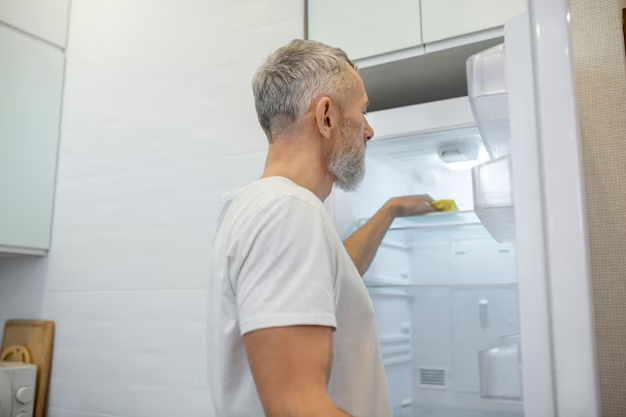Troubleshooting a Leaky Fridge: Discover Why Your Refrigerator Is Dripping Inside
If you've recently noticed pools of water forming at the bottom of your refrigerator, you're not alone. This common kitchen conundrum can be both perplexing and bothersome. Water where it's not supposed to be is more than just an annoyance — it can also impact the overall efficiency of your appliance and potentially spoil your food. But fear not, resolving a leaky refrigerator is often simpler than it seems.
In this comprehensive guide, we'll explore the various reasons why your refrigerator might leak water inside, provide practical solutions, and offer advice on preventing future leaks. By understanding the root causes and knowing what steps to take, you'll be able to keep your refrigerator running smoothly and your kitchen dry.
Common Causes of Internal Refrigerator Leaks
1. Clogged Defrost Drain
The defrost drain helps excess water from the defrost cycle exit the fridge. However, this drain can become clogged with food particles or ice, leading to water backup.
- Solution: Locate the drain hole, usually found at the back of the fridge or in the freezer compartment. Clear any visible debris and flush with warm water. Using a mixture of baking soda and vinegar can also help clear more stubborn plugs.
2. Damaged Door Seal
A faulty door seal or gasket sometimes allows moisture from outside to enter the fridge, causing excess condensation.
- Solution: Inspect the gasket for any signs of wear, such as cracks or tears. Cleaning the seals with soapy water can remove dust and debris, helping maintain a tight seal. Replace the gasket if it appears damaged.
3. Faulty Water Inlet Valve
If you have a refrigerator with a built-in ice maker or water dispenser, the water inlet valve might be loose or malfunctioning, leading to leaks inside the appliance.
- Solution: Tighten any loose connections and inspect the valve for cracks. If damaged, it will need to be replaced.
4. Improperly Installed Parts
Improper alignment or installation of components like ice makers or water dispensers can lead to internal leaks.
- Solution: Refer to the refrigerator manual to ensure correct installation, or contact professional support for complex fixes.
5. Misalignment of Doors
If your refrigerator doors are not aligned properly, it can cause the cool air to escape, leading to excessive condensation inside.
- Solution: Carefully adjust the hinges to realign the doors. This may require loosening the screws slightly, adjusting the door height, and tightening again.
Preventative Measures for a Leak-Free Refrigerator
Keeping your refrigerator in good shape involves some simple but proactive maintenance. Here are a few tips to avoid future leaks:
Regular Maintenance Checklist:
- 🔍 Inspect and Clean the Defrost Drain: Regularly ensure the defrost drain is free of debris.
- 🧽 Clean the Door Gaskets: Prevent wear by cleaning gaskets periodically with mild detergent.
- 🔧 Tighten Loose Connections: Check all hose and pipe connections and tighten them if necessary.
- 📅 Schedule Routine Inspections: Conduct routine checks every six months for signs of potential leaks or wear.
Signs That Differentiate Internal Leaks from Other Issues
It's important to note that not all water problems in the refrigerator are due to internal leaks. Differentiating between an internal leak and other common refrigerator issues helps save time and reduces unnecessary repairs.
Indicators of Internal Leaks:
- Water pooling at the bottom inside the fridge.
- Increased food spoilage due to high moisture levels.
- Water dripping from ceiling of fridge compartment.
Non-Leak Related Water Signs:
- Condensation on the outer surface: This often indicates high environmental humidity.
- Water puddle beneath fridge: It could be due to external spillovers or disconnected hoses.
Proactive Steps for Long-Term Refrigerator Health
Being proactive can significantly extend the life and efficiency of your refrigerator while ensuring it remains leak-free. Here are some additional strategies:
Energy-Saving and Efficiency Tips:
- ✨ Keep Vents Clear: Ensure proper air circulation within the fridge by not obstructing any air vents.
- 🍏 Organize Food Strategically: Properly spaced foods allow air to circulate freely, maintaining consistent temperatures.
- 🕒 Monitor Temperatures: Keep a thermometer inside the fridge for real-time monitoring to ensure it's set between 37°F to 40°F (3°C to 4°C).
Environmental and Placement Considerations:
- Avoid Direct Sunlight: Position your fridge away from direct sunlight to prevent it from working harder to maintain temperatures.
- Maintain Adequate Space Around Appliance: Leave some space between the fridge and walls to enhance heat dissipation.
Practical Summary for Quick Reference
Here’s a concise summary of actions to handle refrigerator internal leaks effectively:
- 🔧 Regularly clear and flush the defrost drain.
- 🧼 Clean door gaskets to ensure strong seals.
- 👀 Monitor water inlet valves and connections for tightness and integrity.
- 📗 Follow the manual for correct installation of all moving parts.
- 📏 Adjust doors to align perfectly, ensuring they close tightly.
Emotional investment in the care of your appliances can feel daunting, but seeing them run smoothly is amply rewarding. By understanding the common causes of internal leaks and taking simple, proactive steps, you can prevent inconvenience, safeguard your food, and enhance the lifespan of your refrigerator. Ultimately, maintaining a clean, dry fridge is less about knowing exactly what to do — and more about understanding why it matters. Embrace these insights, and enjoy the peace of mind that comes with a well-functioning kitchen.
